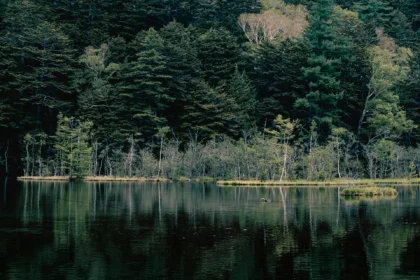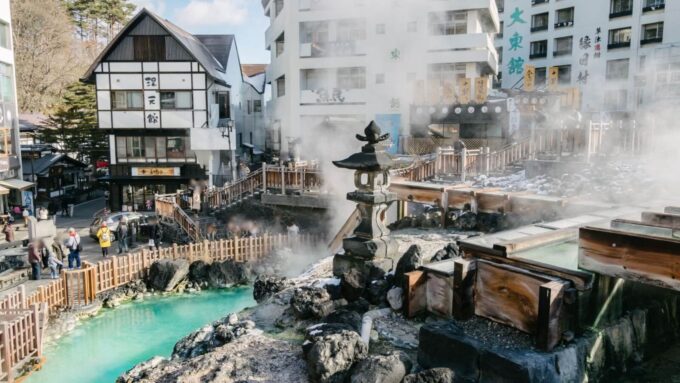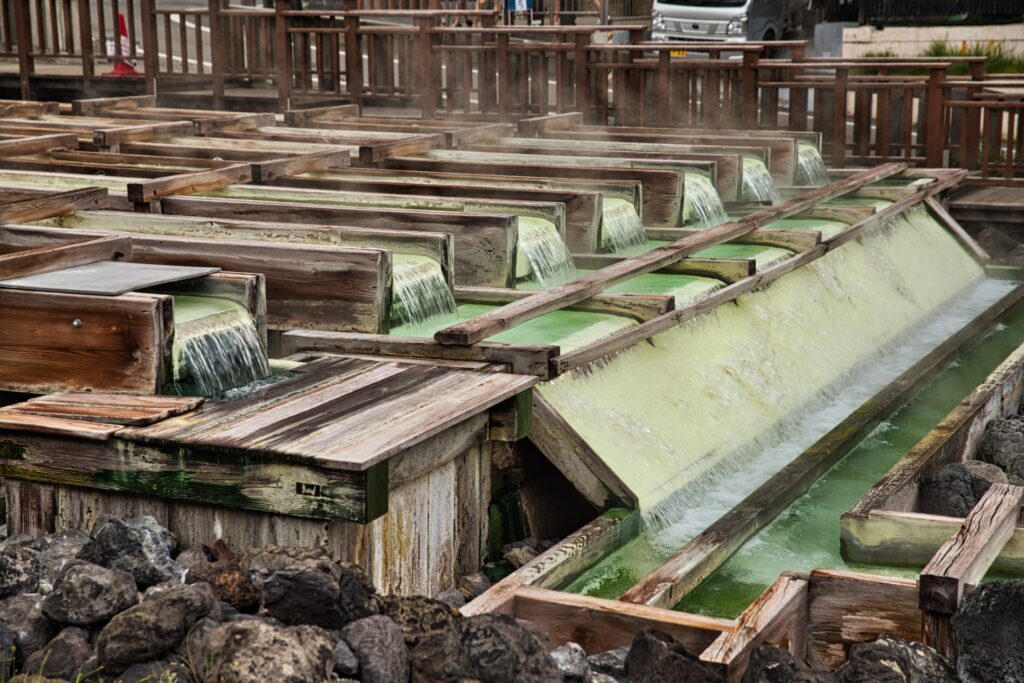
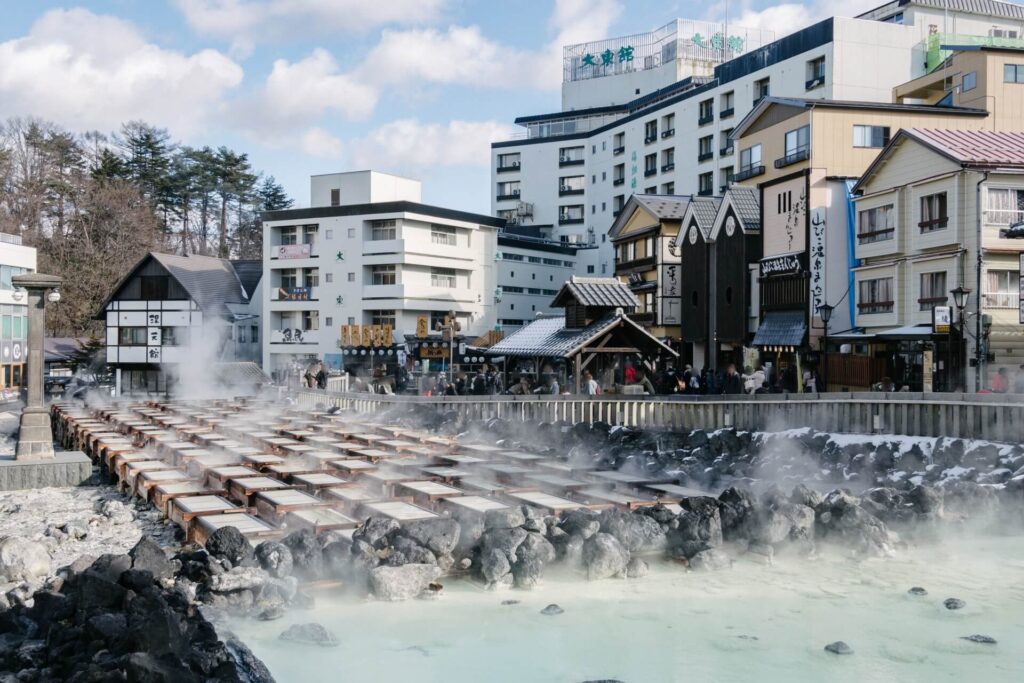
-- The Yubatake: In the Heart of Kusatsu
-- Yumomi Performance at Netsunoyu
-- 25 Things to Do Around Kusatsu and Where to Stay
-- Tours and Charters to Kusatsu
As the center of Kusatsu Onsen, many guesthouses, restaurants and shops surround the yubatake, with people congregating around it to take photos and enjoy the unique atmosphere. Located next to it, visitors can access the ‘Netsunoyu’ to watch ‘yumomi’ performances every day of the year. Given that the yubatake is open-air, it is accessible at all times of day and can be enjoyed free of charge.
THE YUBATAKE: IN THE HEART OF KUSATSU
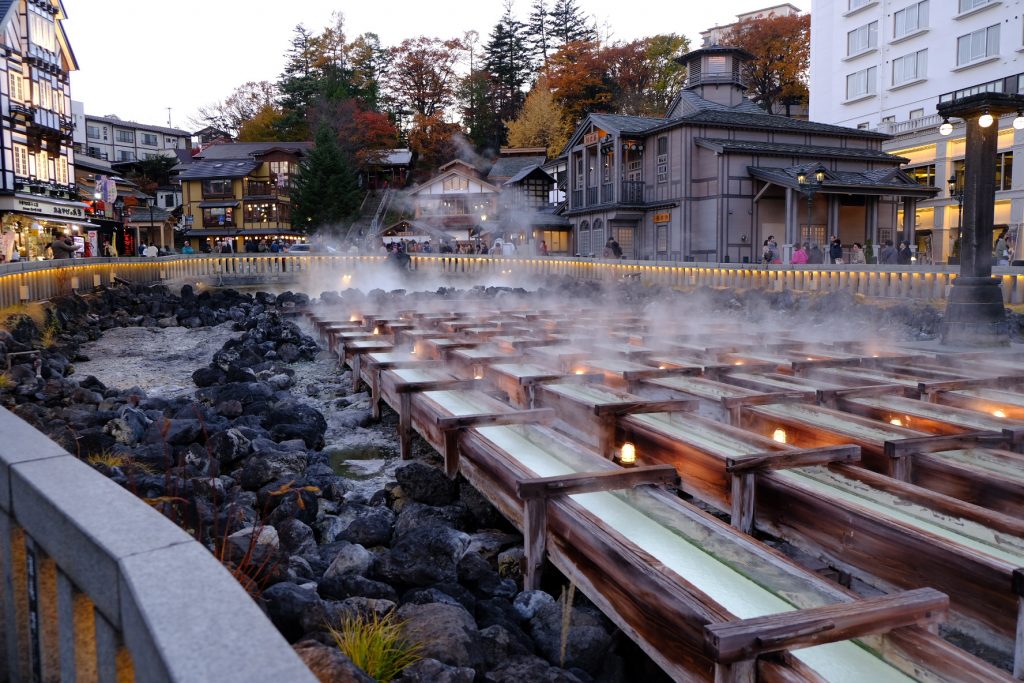
The Yubatake makes for an interesting site. With volcanic rocks, steam, various wooden pipes and steaming hot water, it looks like nothing else most people have ever seen. It is in some ways a testament to the raw power of geological forces; the water comes out a scalding 70 Degrees Celsius and over 5,000 liters per minute flow out from subterranean chambers. This is thanks to the volcanic activity rife in the area, and similar, albeit untamed, sights can be seen nearby on the volcano know as Mt. Shirane.
And yet, the Yubatake is also evidence of the lengths man goes to tame nature and utilize for the benefit of society. The water from the Yubatake is let to flow and cool off for a little, exposed to the crisp mountain air, before being piped to various baths and hotels around Kusatsu. This same water is then enjoyed by those visiting Kusatsu, once it has settled down to a more tolerable temperature.
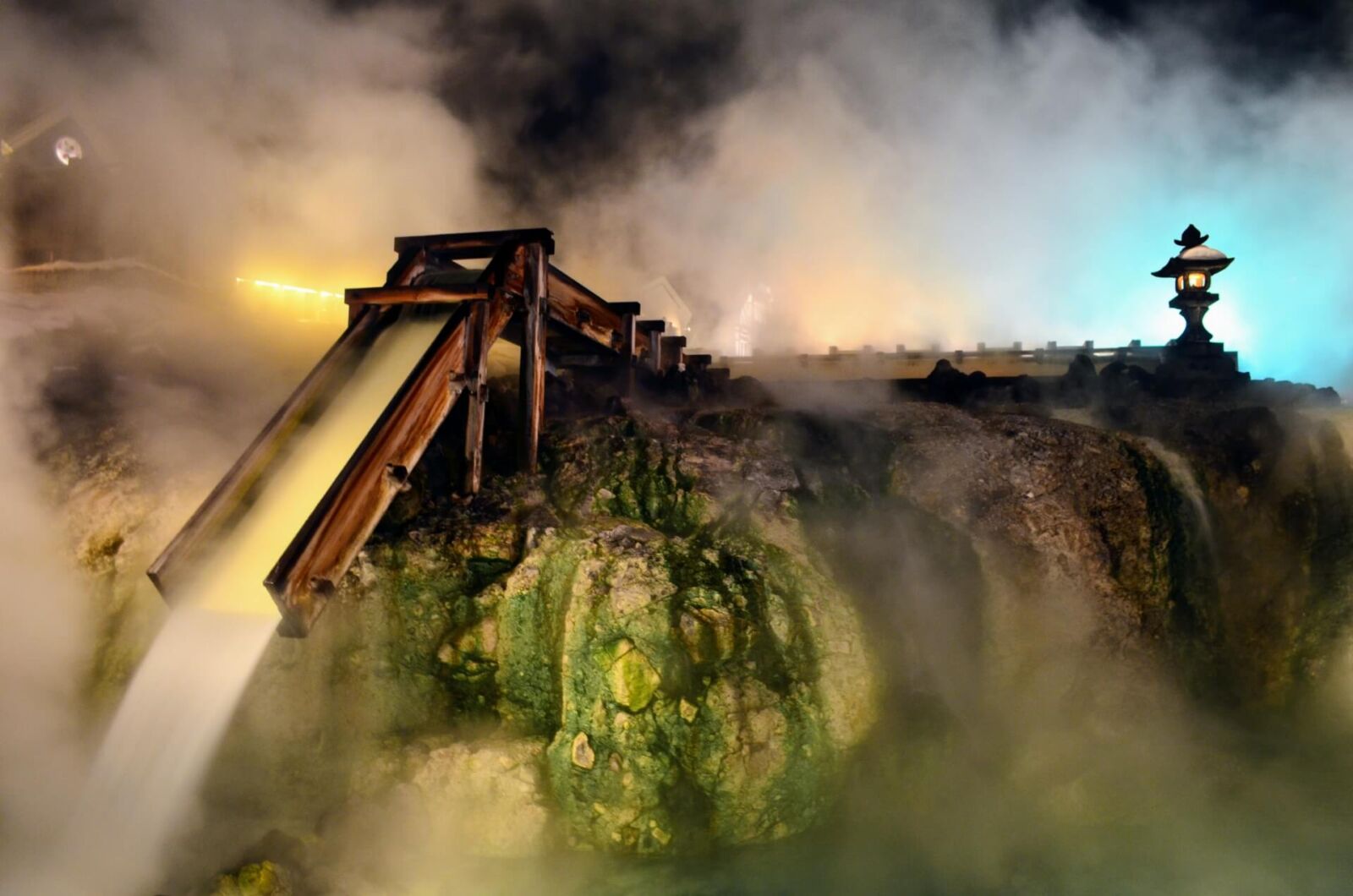
Without the Yubatake, we wouldn't have Kusatsu at all, and Japan would be a little less relaxing. Whoever first came upon the Yubatake in its natural state - some claim it was Yamato Takeru, the ancient and semi-mythological Japanese hero who subdued his enemies in the name of the Emperor - must have been struck first by the smell of sulfur which permeates the area. Even the name of Kusatsu is speculated to come from the Japanese word 'Kusai', which means "smelly". But to those who frequent hot springs, the smell of sulfur signals a good time soon to be and is a welcome companion in the ritual of relaxing in a hot tub.
YUMOMI PERFORMANCE AT NETSUNOYU
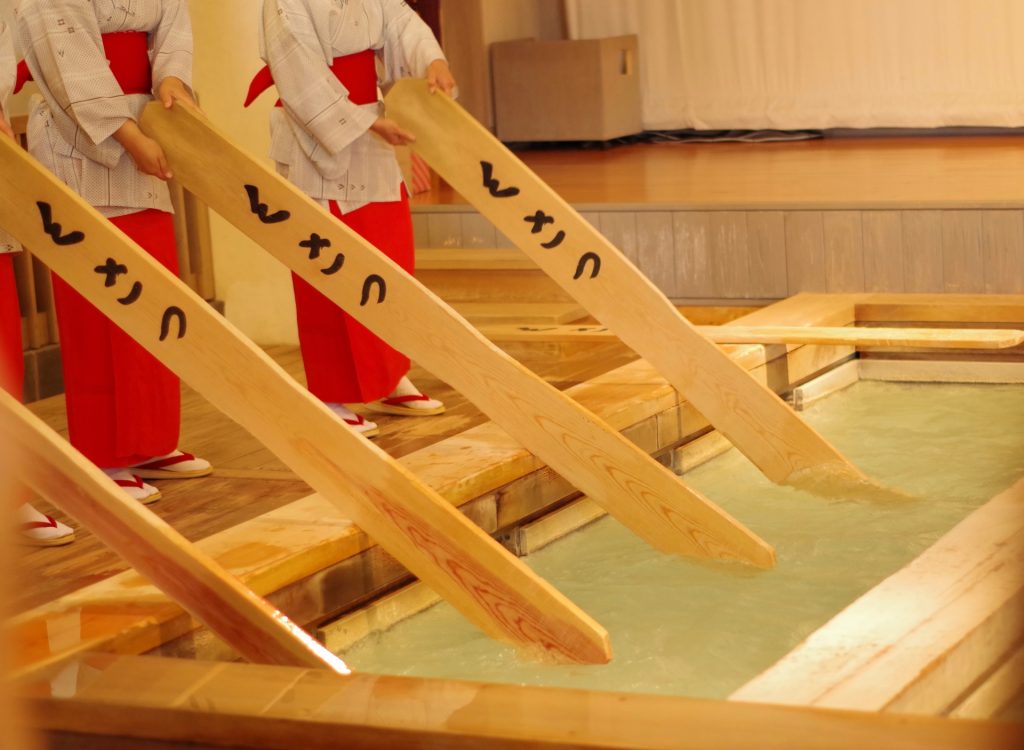
Kusatsu is also famous for a very particular ritual - 'Yumomi'. As mentioned above, the water flowing from the Yubatake is extremely hot, and needs to be cooled off. However, for the closer baths, the water is still a little too hot even after being exposed to the air. For that reason, the practice of yumomi developed to bring the water down to an acceptable temperature. In the past, people would enter the bath after it had been cooled through yumomi, and then stay in until it became too hot once again. At that point, everyone would leave and then re-cool the bath before reentering. In this way, physical activity is combined with repeated bathing, and the health effects of the bath are increased overall.
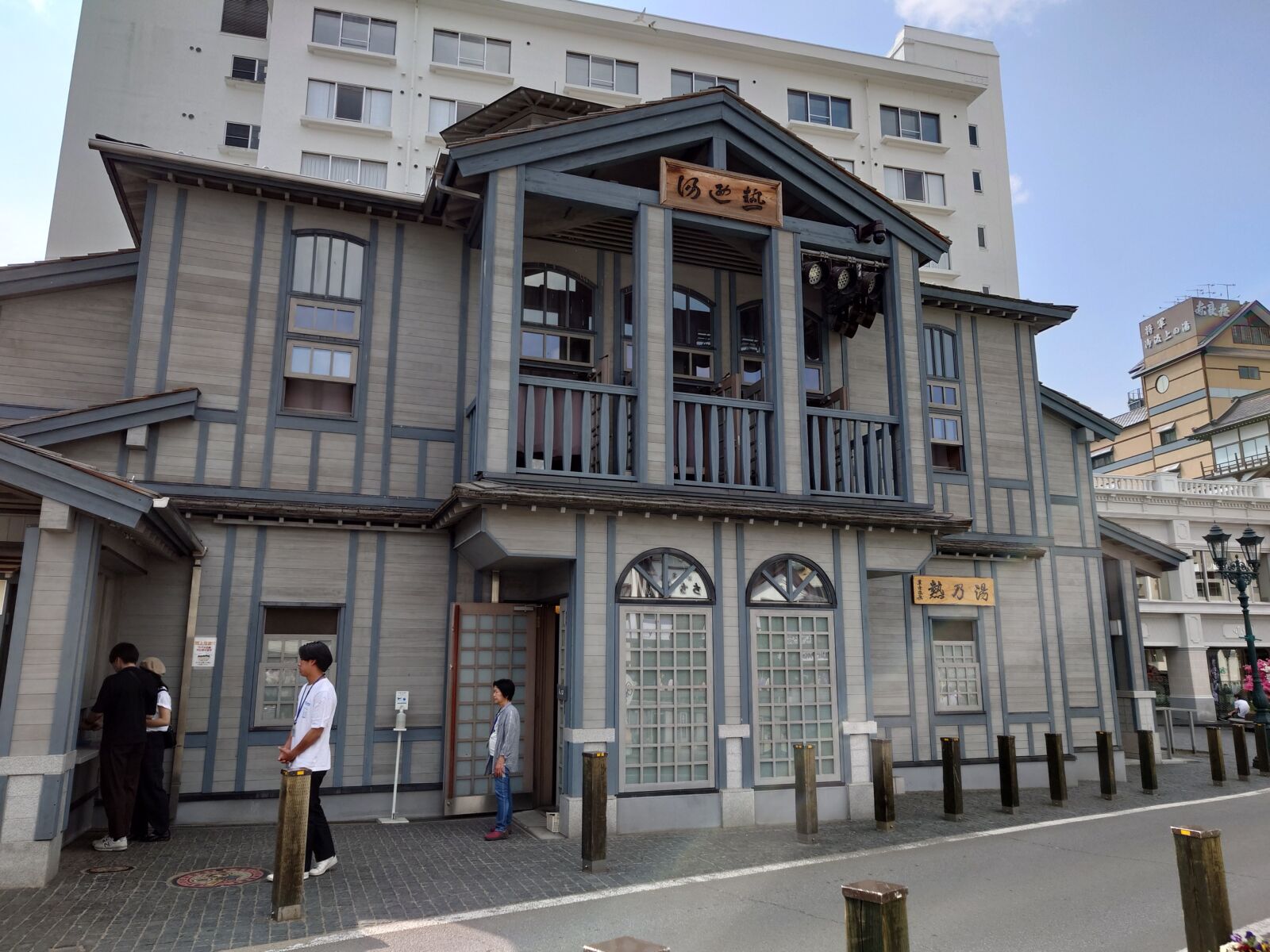
Nowadays, Yumomi is rarely done at most establishments, preferring rather to let the water cool before entering the bath. However, Netsunoyu, pictured above, still keeps up the tradition! While bathing is not allowed (you would have to do so in front of the whole crowd!), visitors are able to go in at set times and enjoy the show, done by seasoned practitioners. While it is ultimately for a practical purpose, it has evolved to be something of an art as well, with synchronized splashing, singing, and general spectacle involved.
Tickets for the Yumomi cannot be reserved. They must be purchased on the day, and if the time slot you want runs out you will need to wait for the next. As it can be very popular, we recommend looking up the times and arriving well in advance to secure your ticket.
A SHORT HISTORY OF KUSATSU
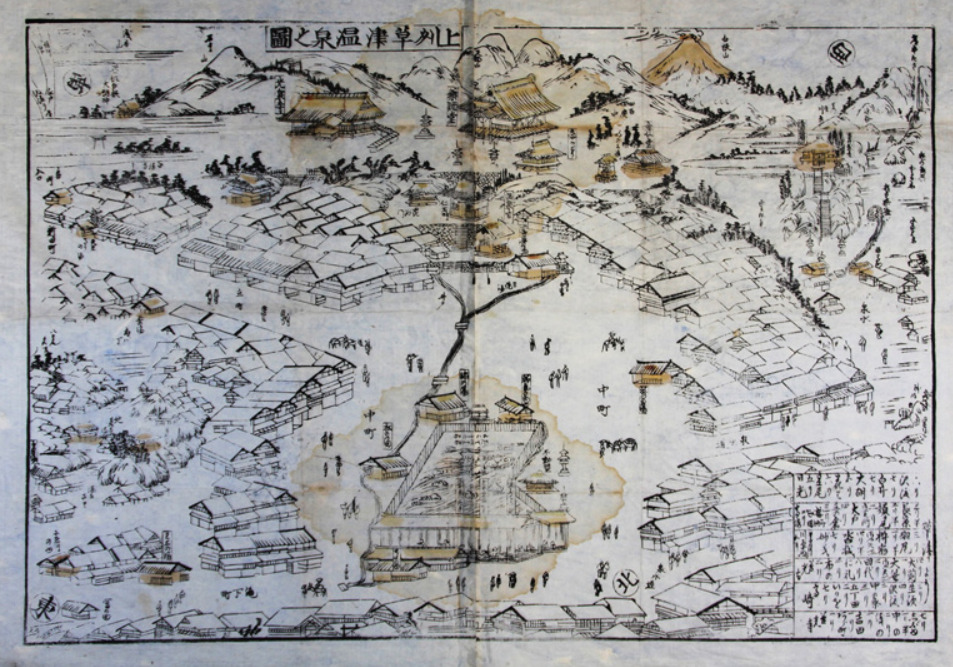
Kusatsu Onsen has an impressive history as one of Japan's best onsen towns. The oldest record in existence that definitively points to Kusatsu is from 1472, during the warring states period of Japanese history when the onsen was often used for samurai to rest and heal their wounds after battles. However, in folklore, the founding of the town is credited to more ancient figures such as Yamato Takeru, a mythological hero supposed to have lived 1,500 years ago. Regardless of when the town was formed, it started to pick up nationwide praise around the 16th century, where it's name suddenly appears in a large number of documents. Since that time, it has been in vogue as a spot to visit for a vacation and remains so to this day. The map above, produced in the Edo Era (1600-1868), shows the development of the town and the famous Yubatake in the central area. Indeed, rankings of onsen nationwide were published frequently throughout that era and Kusatsu was nearly always awarded top spot in East Japan.
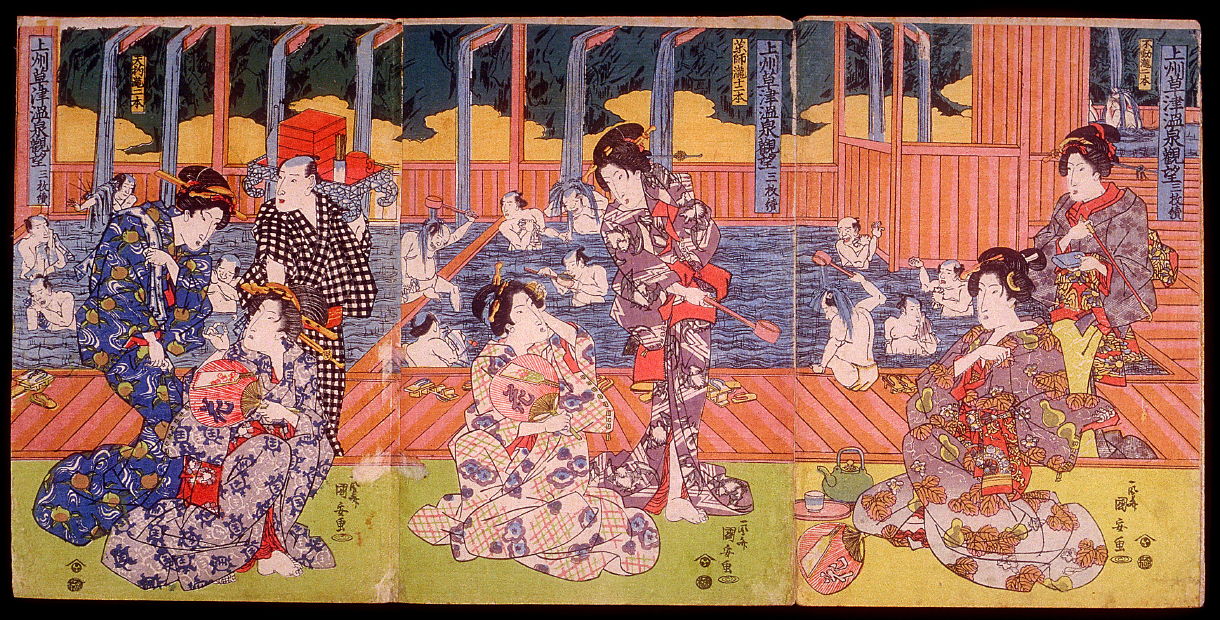
In this Ukiyo-e artwork from the time, fashionable geisha are depicted in the foreground, receiving a delivery of a meal from the man in the checkered kimono. In the back, we can see one of the hot spring baths Kusatsu is famous for and the appearance of bathers at that time. Indeed, the area was so popular that the Shoguns in Edo (now Tokyo) even had the water from the springs delivered in large containers, carried by hand over hundred of kilometers to the castle in central Edo. Into the 20th century, a number of famous actors, scientists and politicians visited Kusatsu as well, it's popularity never waning. Today, it is as lively as ever and still remains one of the quintessential "onsen towns" of Japan.
25 THINGS TO DO AROUND KUSATSU AND WHERE TO STAY
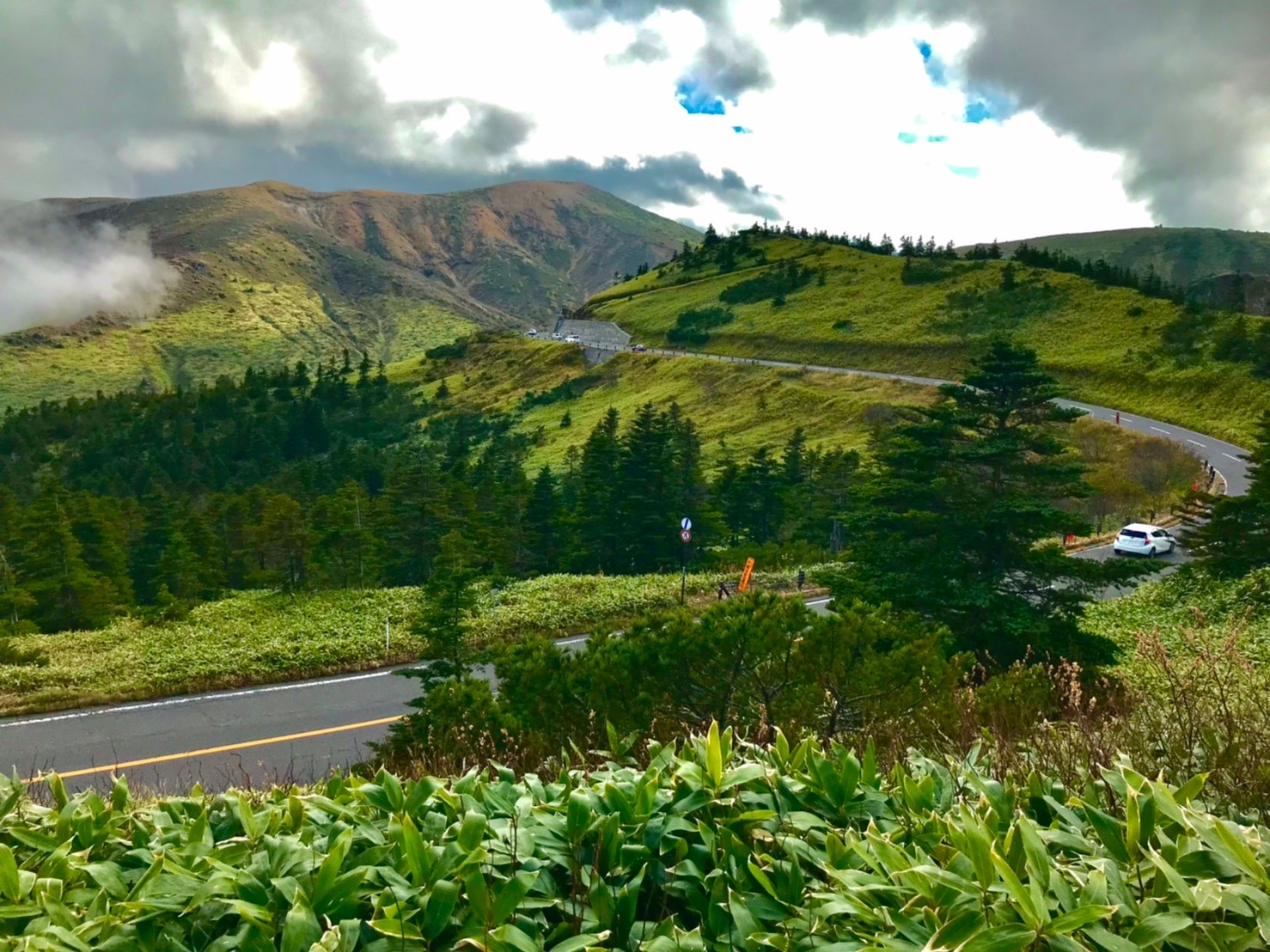
While Kusatsu is of course an onsen town, it is also located near to several national parks and areas of natural beauty, making it a great base from which to explore the broader region. And any exploration you do will be all the more enjoyable knowing that you can come back to enjoy a nice hot bath at night! While public transport is definitely usable for getting around, if possible we recommend renting a car to give yourself more freedom and enjoy the beautiful highways bringing visitors in and out of the town. For more suggestions on things to do in Kusatsu, please see our page '25 Things to Do Around Kusatsu Onsen & Where to Stay'.
TOURS AND CHARTERS TO KUSATSU
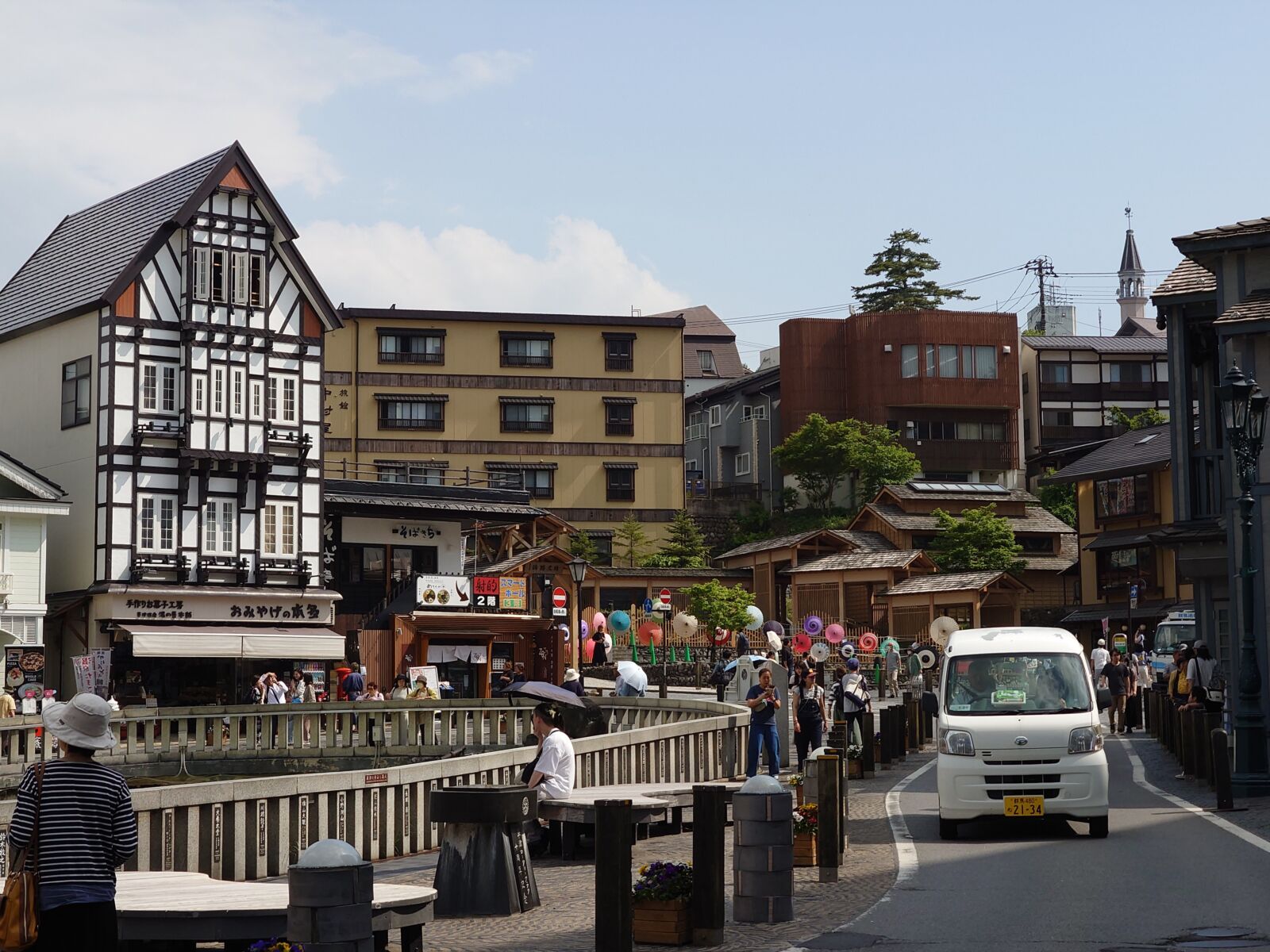
Are you convinced that visiting Kusatsu is a great idea? If so, our group tour of the area may be for you! As always, our guides are professional and friendly and our dedicated tour vehicles and drivers are safe and ready to whisk you to your destination.
Offering pick up from both Nagano Station and Karuizawa Station, this tour can be easily joined even by those coming up from Tokyo. With a stop on the way at the dry lava fields of the Onioshidashien, this tour will show you the best of Kusatsu, give you time to eat or enter an Onsen at your own discretion, and bring you to the top of Mount Shirane on one of Japan's most scenic roads.

If all you need is a vehicle to take you, your group, and your luggage to the Kusatsu area, look no further! Our private charters provide door-to-door service from a location of your choice, to anywhere you want to go in and around Kusatsu! For more information on pricing and availability, please contact us HERE.














